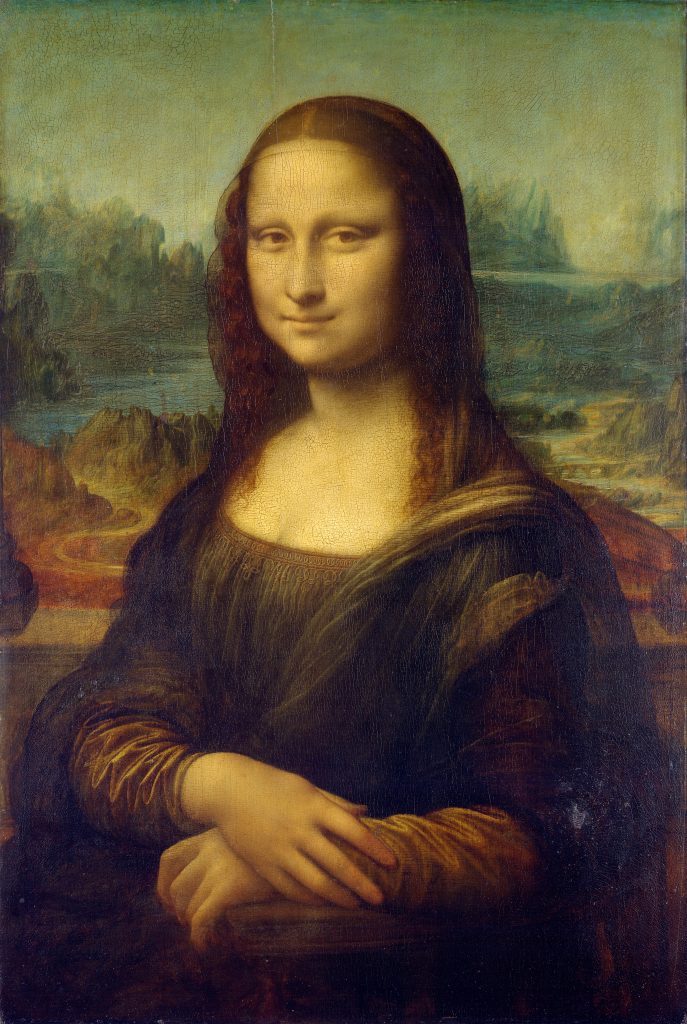The Mona Lisa
The Mona Lisa, painted by Leonardo da Vinci, is perhaps one of the most famous and enigmatic works of art in the world. The painting depicts a woman, believed to be Lisa Gherardini, a member of a wealthy Florentine family, sitting in front of a landscape with a winding road, bridges and a river. The painting is notable for the expression of the woman, who appears to be smiling slightly, yet also conveying a sense of mystery and ambiguity that has fascinated viewers for centuries.
One of the most striking aspects of the painting is the composition. The woman sits in front of a low parapet or balcony, with her arms and hands resting on the armrests. The composition is well-balanced, with the figure of the woman taking up most of the canvas, while the background is a carefully crafted landscape that draws the viewer’s eye towards the horizon. The use of perspective is also notable, with the woman’s figure appearing to be three-dimensional, despite the lack of shadow and chiaroscuro.
Another aspect of the Mona Lisa that has fascinated viewers for centuries is the enigmatic smile of the woman. Her lips appear to be turned up slightly at the corners, yet the expression is difficult to interpret. Some viewers have suggested that the woman is smiling because she is thinking of a lover or a child, while others have suggested that the smile is a reflection of the woman’s inner thoughts and emotions. The ambiguity of the expression has contributed to the painting’s mystique and has made it a subject of fascination for scholars, art historians, and the general public alike.
The Mona Lisa is an outstanding work of art that continues to fascinate and inspire viewers centuries after its creation. The painting’s masterful composition, use of perspective, and the enigmatic expression of the woman continue to captivate the imagination of art lovers around the world. The Mona Lisa is truly a masterpiece of the Renaissance, and a testament to Leonardo da Vinci’s skill as an artist and his ability to capture the complexities of the human experience in paint.

